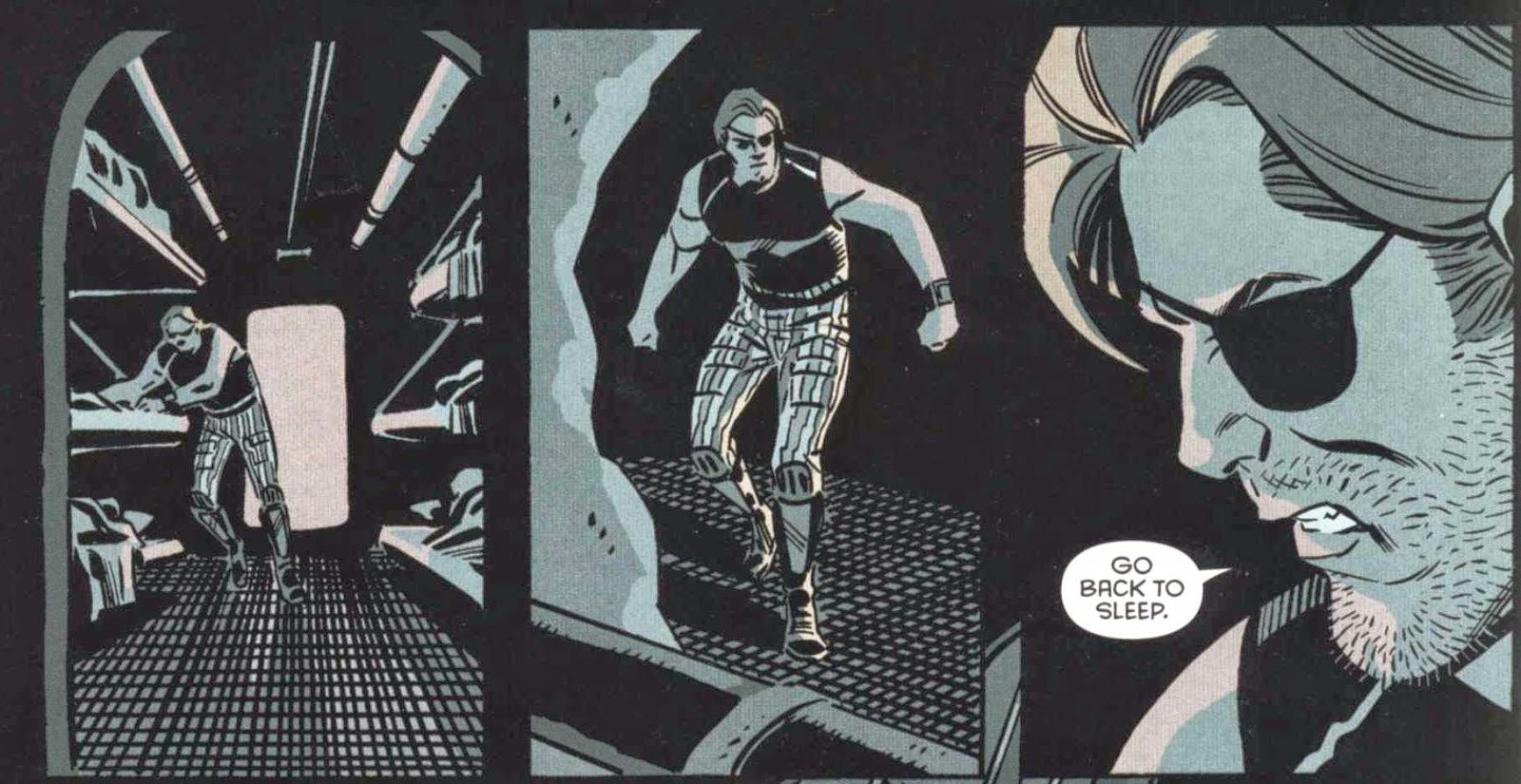Christopher Sebela (story) and Diego Barreto (art)
Boom ! Studios, 2014 - 2015
[Earlier in 2014, Boom! had released a comic book series based on Carpenter's 1986 film, 'Big Trouble in Little China'.]
The 'Escape from New York' sequel evidently is scheduled to last for 6 issues.
Given my opinion of the contemporary comic book scene, I didn't have major expectations for the new series, but I was willing to pick up the first two issues to see what it was like.
On the one hand, the series does start things off right where the movie left off, which is good....our hero has made the President a laughing stock and threatened World Peace, and Bob Hauk is ordered to put Snake right back into NYC prison. Snake, of course, has no intention of complying, and makes a break for freedom.
But the plot, by Christopher Sebela, too quickly becomes utterly frenetic and haphazard. For example, within a series of only three panels, Snake stands atop a speeding jeep....climbs onto the skid of a hovering chopper.........and makes his way into the cockpit to hijack the aircraft...?! This rushed, facile approach to the narrative gives the comic a hyperactive quality completely out of character with the movie.
Diego Barreto's artwork has the cartoony, manga-inspired styling that dominates much of the contemporary comic book aesthetic, and when it's combined with a flat color scheme from colorist Marissa Louise, the result is less than impressive.....I got the impression I was reading a sequel to 'Escape from New York' produced by Hanna-Barbera.
I won't disclose any spoilers, save to say the plot has Snake escaping New York and lighting out for Florida, now an independent, anarchistic state which protects itself from the federal government via a mine field of Cuban nukes buried along the state's northern border.....
The movie was set in 1997, albeit a 1997 as imagined by a film-maker living the early 80s. Unfortunately, there's little effort on writer Sebela's part to communicate any information on the year in which this sequel is set, and thus, the narrative is devoid of any real stylistic continuity with the backstory, and atmosphere, of the film. It comes across as a rebooted 'Escape' set in a decrepit USA ca. 2015.
There are still four issues of 'Escape from New York' to go, but if the first two issues are any indication, this is yet another unimpressive retooling of a franchise that deserves much better.........















































































